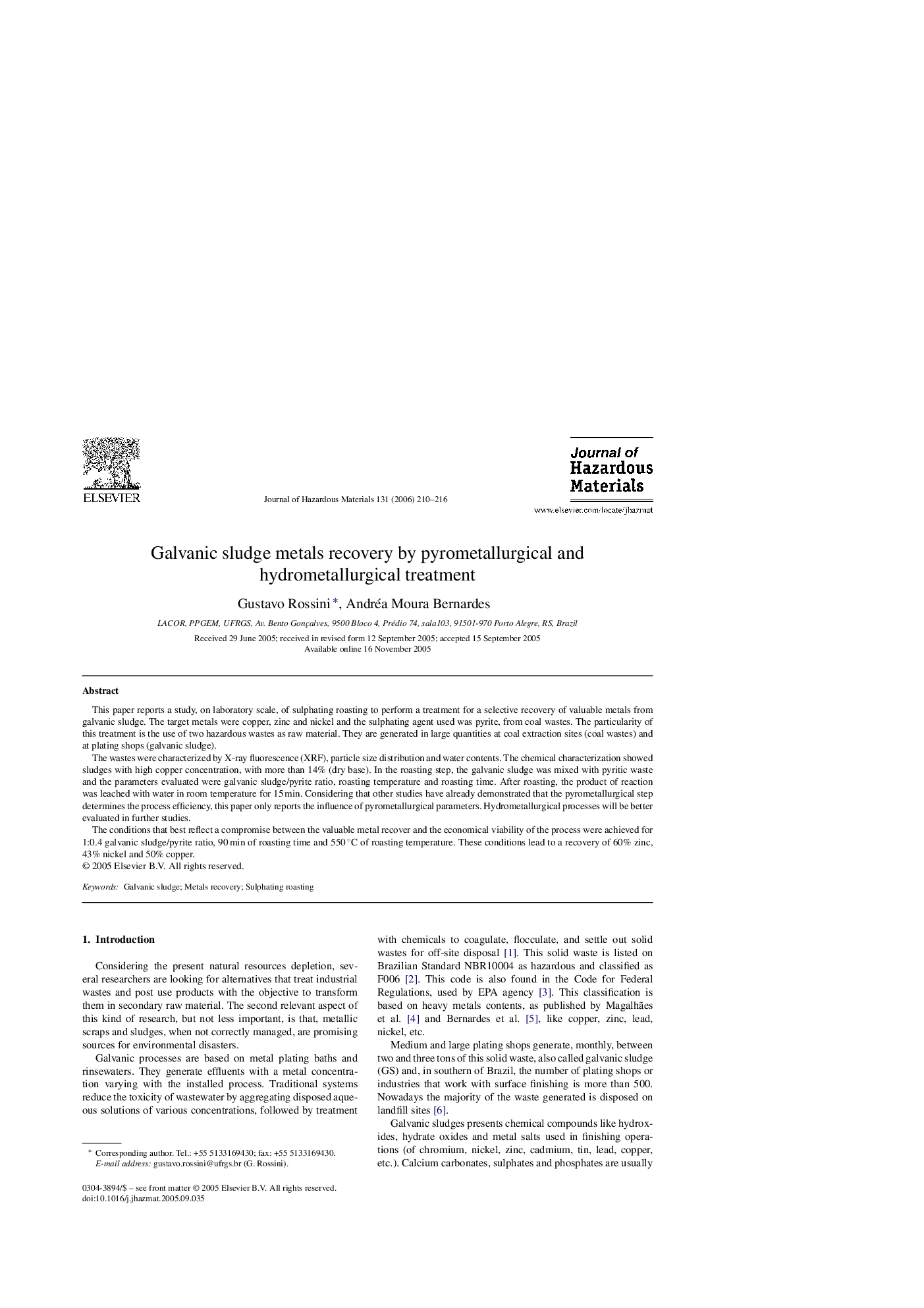| Article ID | Journal | Published Year | Pages | File Type |
|---|---|---|---|---|
| 585848 | Journal of Hazardous Materials | 2006 | 7 Pages |
This paper reports a study, on laboratory scale, of sulphating roasting to perform a treatment for a selective recovery of valuable metals from galvanic sludge. The target metals were copper, zinc and nickel and the sulphating agent used was pyrite, from coal wastes. The particularity of this treatment is the use of two hazardous wastes as raw material. They are generated in large quantities at coal extraction sites (coal wastes) and at plating shops (galvanic sludge).The wastes were characterized by X-ray fluorescence (XRF), particle size distribution and water contents. The chemical characterization showed sludges with high copper concentration, with more than 14% (dry base). In the roasting step, the galvanic sludge was mixed with pyritic waste and the parameters evaluated were galvanic sludge/pyrite ratio, roasting temperature and roasting time. After roasting, the product of reaction was leached with water in room temperature for 15 min. Considering that other studies have already demonstrated that the pyrometallurgical step determines the process efficiency, this paper only reports the influence of pyrometallurgical parameters. Hydrometallurgical processes will be better evaluated in further studies.The conditions that best reflect a compromise between the valuable metal recover and the economical viability of the process were achieved for 1:0.4 galvanic sludge/pyrite ratio, 90 min of roasting time and 550 °C of roasting temperature. These conditions lead to a recovery of 60% zinc, 43% nickel and 50% copper.
